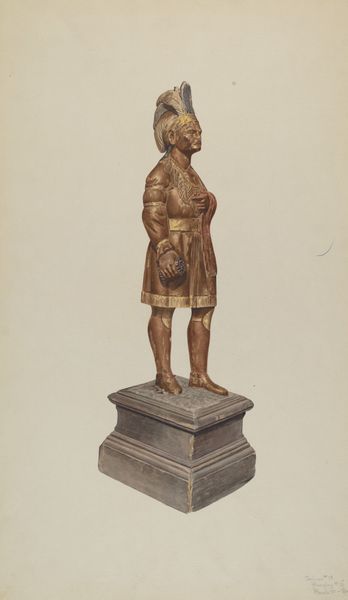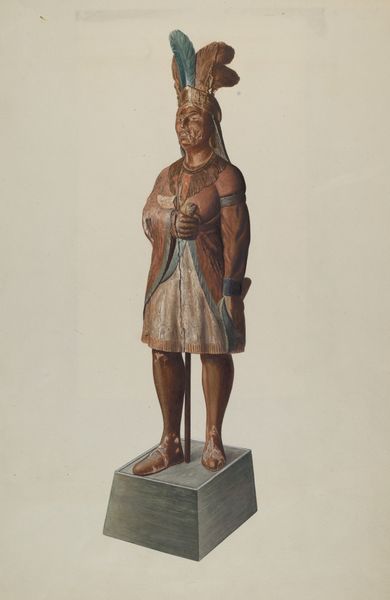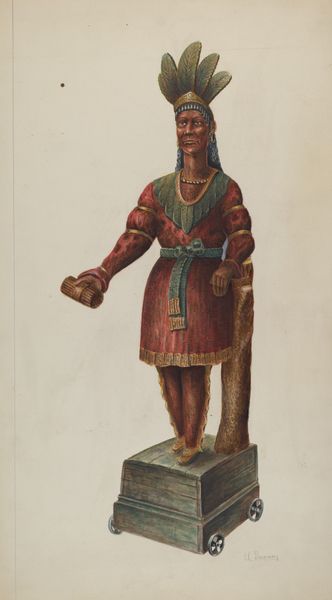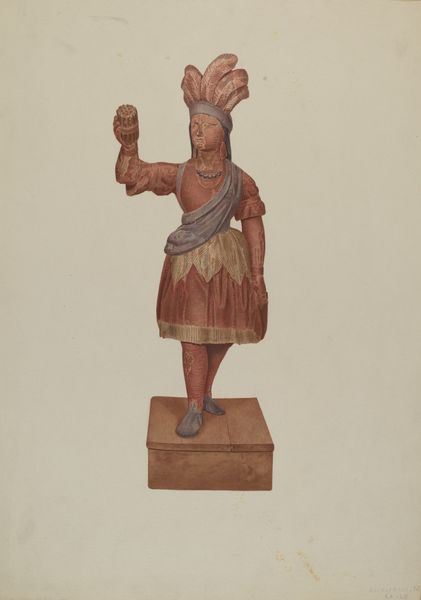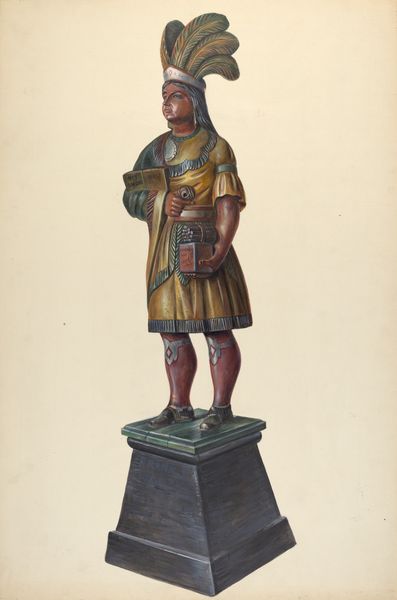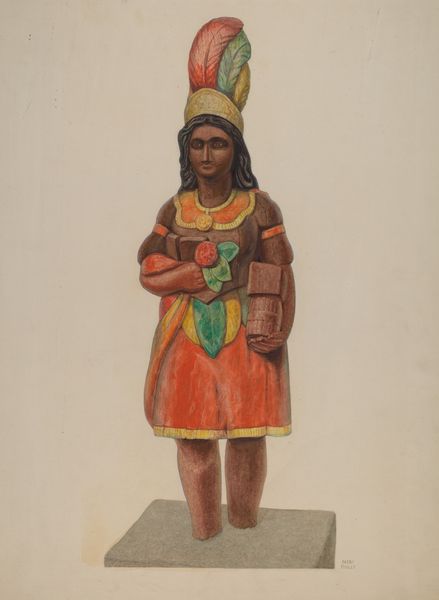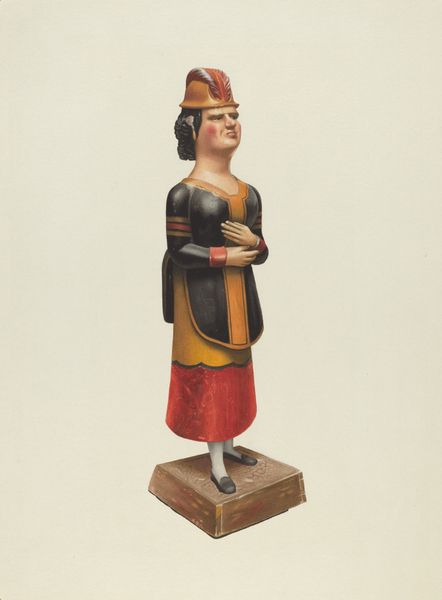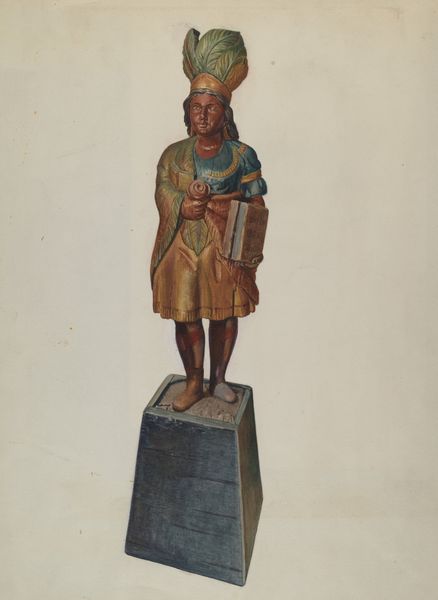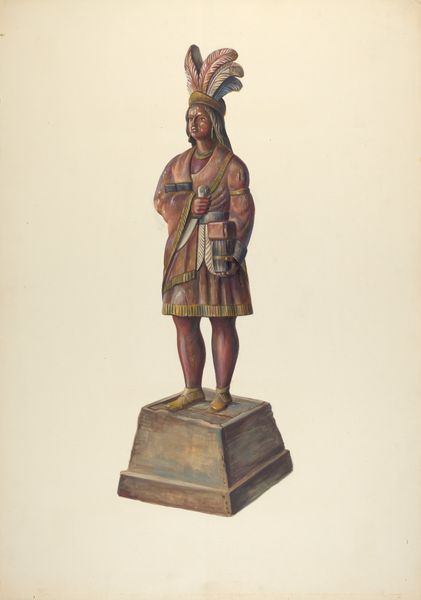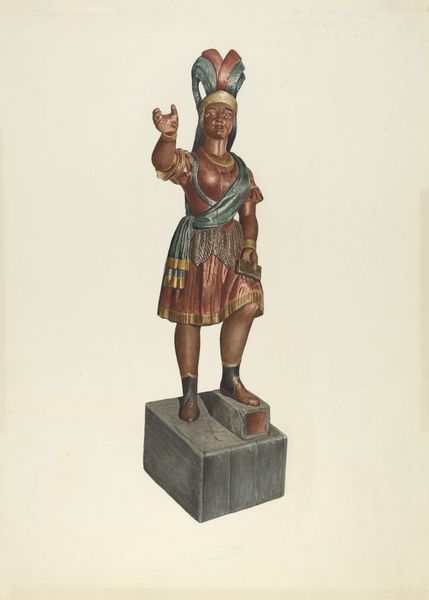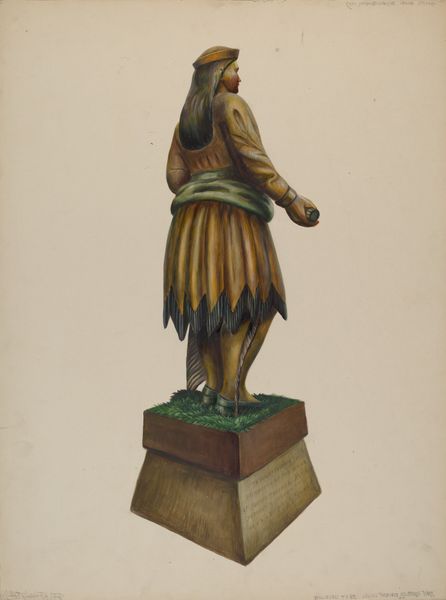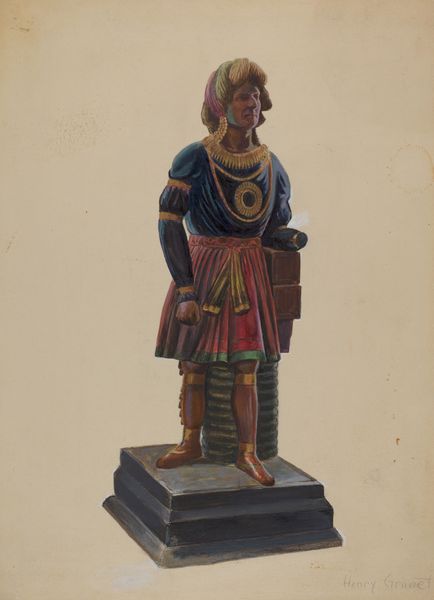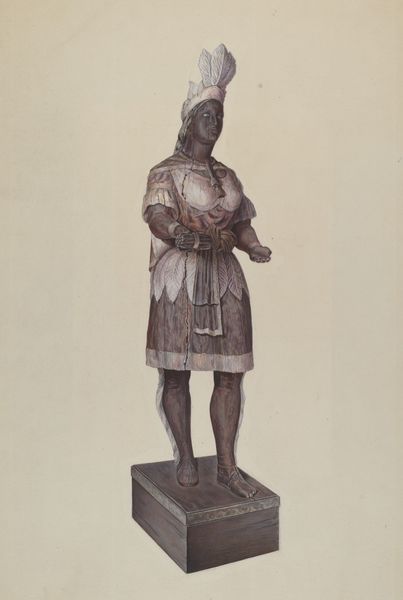
painting
#
portrait
#
painting
#
charcoal drawing
#
figuration
#
portrait drawing
#
portrait art
Dimensions: overall: 35.3 x 26.9 cm (13 7/8 x 10 9/16 in.)
Copyright: National Gallery of Art: CC0 1.0
Curator: Standing before us is "Indian Woman," a piece believed to be created around 1940. It seems to combine both drawing and carving techniques and potentially involves the use of wood and charcoal in its production. What's your immediate take on this? Editor: Well, the first thing that strikes me is its theatrical quality. The figure’s pose, the elaborate headdress – it feels staged, like a character in a play. And those clearly marked 'cigars' at the sculpture base place it directly into a consumerist niche. Curator: Indeed. The figure is fascinating because of the intersection of folk art traditions and commercial interests here. The material itself—let's consider the wood, and possibly the addition of pigments—speaks to a blend of craft and industry. Editor: Exactly. How does the artist grapple with representation here? There's this romanticized, almost caricatured, image of an "Indian woman" being used as a commercial tool. How might socio-political forces have shaped the creation and the reception of this work back in the 1940s? I imagine this object had its particular function displayed prominently. Curator: A keen point. The wood used here is not precious or rare, pointing towards its industrial origins and its connection to a working-class marketplace. Furthermore, it appears the color palette may have been guided by what pigments were cost-effective at the time. The making of it is just as crucial to interpret its original significance. Editor: Absolutely, and it speaks volumes about the appropriation of Indigenous imagery for profit, right? It makes you wonder about the perspectives it excludes, how it might have reinforced harmful stereotypes, and how the artist or commissioner grappled (or didn't grapple) with their cultural role in those practices. Curator: I'm inclined to believe that an exercise in observing labor informs my opinions here; how readily wood, pigments, and the skills to fashion it could have been exchanged during that era, perhaps telling a fuller story through accessible means and resources. Editor: This prompts a richer perspective; beyond the superficial imagery lies an art that carries so much of American cultural and economic baggage, revealing unsettling aspects of how the figure existed then – and the traces it may be leaving to this day. Curator: Agreed, this closer consideration makes this piece much more layered than initially apparent.
Comments
No comments
Be the first to comment and join the conversation on the ultimate creative platform.
